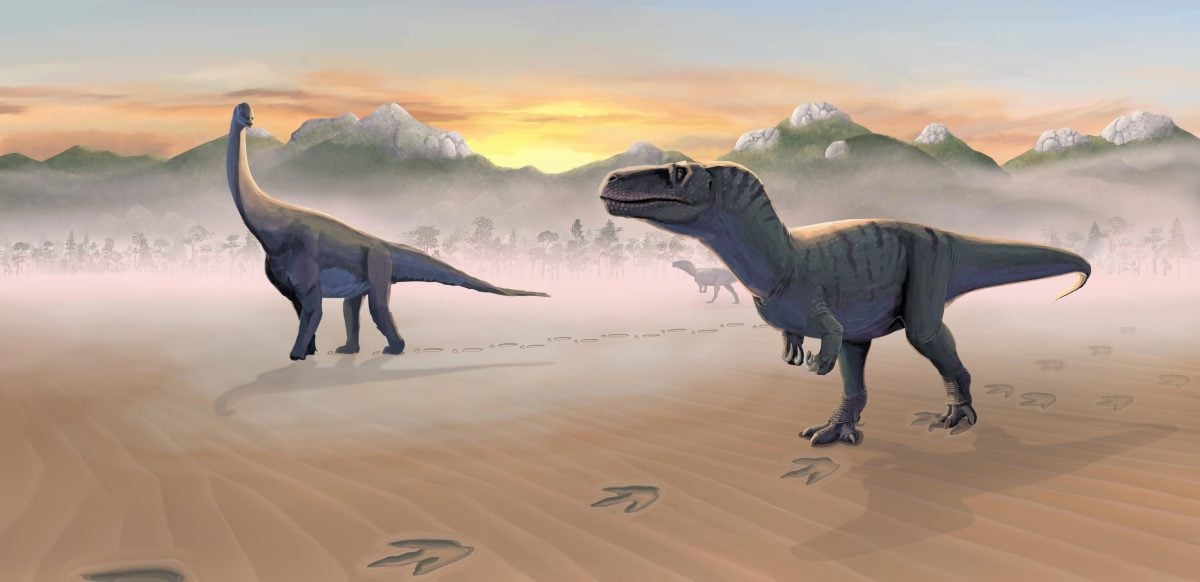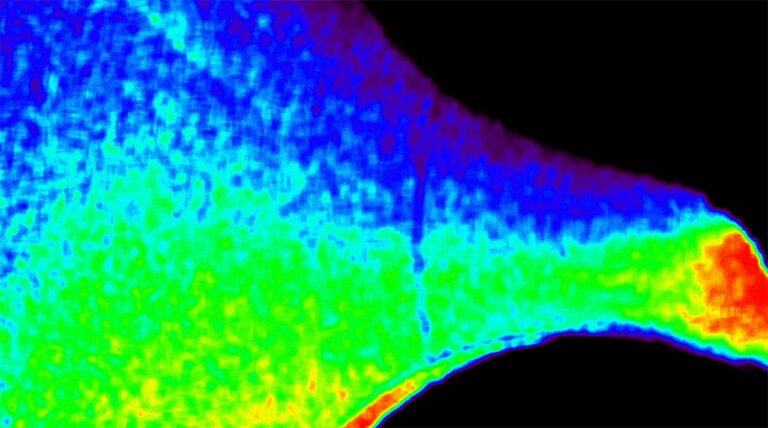In a remarkable paleontological discovery, scientists have uncovered massive dinosaur footprints along the Isle of Skye in Scotland, shedding light on a previously unknown ecosystem of ancient lagoons that existed during the Middle Jurassic period. This incredible find is helping researchers piece together crucial gaps in the fossil record and offers new insights into dinosaur behavior, climate, and habitat nearly 170 million years ago.
The Discovery: A Window into the Jurassic World
The dinosaur footprints, preserved in ancient limestone and mudstone, were discovered at Brothers’ Point, a scenic headland on the northeastern coast of the Isle of Skye. The tracks belong to multiple dinosaur species, including long-necked sauropods and fierce theropods — the ancestors of today’s birds.
What makes this discovery extraordinary is its location. The footprints were found in what used to be a coastal lagoon, indicating that these massive creatures roamed tidal flats and shallow waters. The tracks vary in size, with some measuring nearly one meter in diameter — evidence of gigantic dinosaurs walking through the area.
What the Dinosaur Footprints Reveal
1. Mid-Jurassic Timeline Clarity:
The Middle Jurassic era (roughly 174–163 million years ago) is one of the least understood periods in dinosaur evolution due to the rarity of fossil finds. These newly discovered footprints provide rare and vital data to understand how dinosaurs evolved and adapted during this time.
2. Lagoon Ecosystem Insights:
The presence of dinosaur tracks in what were once shallow lagoons reveals that these creatures were more adaptable than previously thought. They could traverse coastal environments, indicating complex behaviors such as searching for food, migration, or group movement.
3. Coexistence of Sauropods and Theropods:
The site includes both plant-eating sauropods and meat-eating theropods, suggesting a diverse and dynamic habitat where multiple dinosaur species coexisted. Their footprints, often found side by side, offer evidence of how different dinosaurs might have interacted within the same environment.
4. Soft Ground Adaptability:
The deep impressions suggest that the ground was wet and soft — challenging terrain for such massive creatures. Yet, the clarity of the tracks shows that these dinosaurs were well-adapted to such marshy, tidal conditions, offering clues into their physiology and locomotion.
Scotland: A Dinosaur Fossil Hotspot?
The Isle of Skye is rapidly gaining recognition as a significant dinosaur fossil site in Europe. In recent years, multiple discoveries — including bones, teeth, and footprints — have positioned Scotland as a treasure trove for Jurassic-era research. This latest find adds a new dimension by providing ecological context to the region’s prehistoric past.
The Science Behind the Study
Researchers used drones, 3D mapping, and digital modeling to analyze the footprint site in detail. These advanced techniques help create virtual models of the tracks, allowing scientists to study their size, shape, and spacing without damaging the delicate fossils.
The project involved collaboration between Scottish universities and international paleontologists, emphasizing the global importance of the discovery. The findings were published in the Scottish Journal of Geology, sparking widespread interest among scientists and dinosaur enthusiasts alike.
Why This Matters
For Paleontology:
This discovery fills crucial gaps in our understanding of Middle Jurassic dinosaurs, especially in Europe. It helps trace the movement, evolution, and diversity of dinosaur species during a time when Earth’s climate and geography were changing dramatically.
For Tourism and Education:
Scotland’s rugged landscapes now tell a deeper story — one etched in ancient footprints. Sites like Brothers’ Point are expected to attract tourists, researchers, and students, contributing to local education and geotourism.
For Climate Science:
Studying the environment in which these dinosaurs lived offers insights into past climate conditions. Understanding how ecosystems evolved during warmer periods could help scientists predict the effects of modern climate change.
Final Thoughts
The massive dinosaur footprints on Scotland’s Isle of Skye are more than just imprints in stone — they are a direct link to an ancient world that existed millions of years ago. These tracks speak volumes about dinosaur life, their environment, and how they adapted to a changing world. As scientists continue to analyze these findings, we move one step closer to unraveling the mysteries of Earth’s prehistoric past.

















+ There are no comments
Add yours